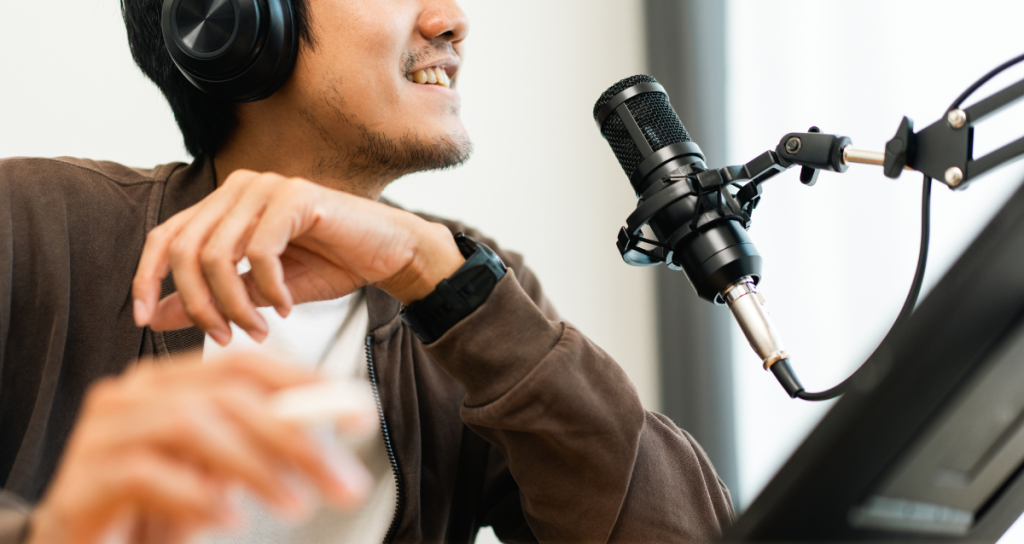Written by Lucy Uhrick, Audio Engineer, PeopleForward Network
As an Audio Engineer at PeopleForward Network, I’ve noticed some common issues that could probably be avoided with a few tips and tricks. So, I want to share some valuable insights and best practices from an editor’s point of view to help ensure we’re getting the best possible audio quality for your podcast recordings.
Listen or read below.
Before You Press Record
Turn Off Notifications: Make sure to turn off all ringers and notifications on your phone and computer. Put them on do not disturb mode. Notifications going off during recording can be disruptive and challenging to edit out cleanly.
Select Your Microphone: Always ensure your preferred recording device (microphone) is selected before starting your recording. You want crisp, clear audio from a microphone rather than your computer’s built-in mic.
Use Headphones: Both you and your guest should wear headphones. This prevents audio from your speakers from being picked up by the microphones, which can cause echo or feedback issues.
Check Your Mic Levels: Do a quick mic check before recording. Aim for green or yellow levels on your audio meter. Red levels indicate your audio is too loud, which can cause audio clipping and distortion that’s difficult to fix in editing.
Keep Your Notes in Front of You: Position your notes directly in front of you, either on a split-screen or using Riverside’s teleprompter feature. Turning your head away from the mic can cause fluctuations in audio levels.
During Recording
Pause Before Speaking: After pressing record, pause for a couple of seconds before starting to speak. This ensures nothing gets cut off at the beginning of your recording.
Take Breaks When Needed: If you stumble on words, need to cough or drink water, or hear background noise, pause and wait for the distraction to pass before continuing. This gives the editor a clean point to make any necessary edits.
Avoid Rustling Sounds: Be mindful of rustling paper notes or fiddling with headphone wires, as these sounds can be disruptive. If you need to adjust something, pause first, then resume speaking.
Communicate with the Editor: Feel free to speak directly to the editor during recording. For example, “Actually, can we edit that out?” or “Let me start over.” This makes it clear where edits should be made.
Note Sections to Keep: If there’s a particular section you’d like to keep, like funny banter or an off-topic tangent, let the editor know at the end of the recording.
After Recording
Wait for the Upload to Complete: Do not exit Riverside until your episode has completely uploaded. Riverside needs time to ensure the full episode is available for editing.
Use a Consistent Setup: Keep your recording setup consistent from episode to episode. Take photos of your ideal mic positioning and settings to replicate good audio quality.
Don’t Be Afraid to Ask for Help: Technology can be finicky, and issues may arise. Don’t hesitate to reach out to the PFN team for assistance or to receive feedback and notes for improvement.
By following these best practices, you can help ensure a smooth editing process and deliver high-quality audio content to your listeners. Happy podcasting!

